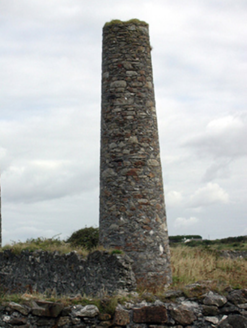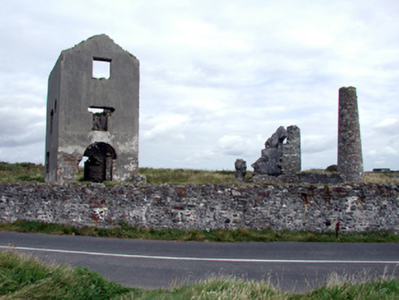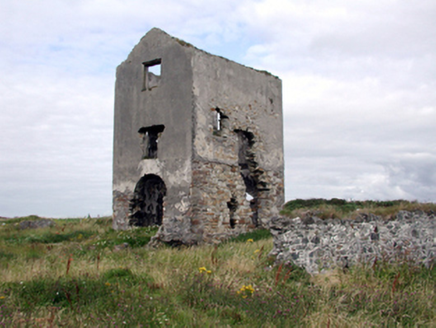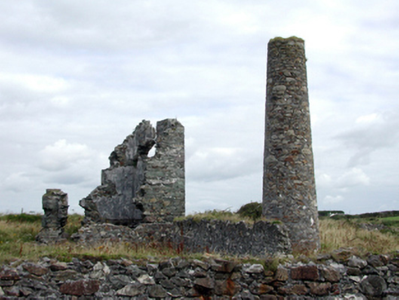Survey Data
Reg No
22902504
Rating
Regional
Categories of Special Interest
Architectural, Technical
Original Use
Engine house
Date
1850 - 1855
Coordinates
245030, 98717
Date Recorded
19/08/2003
Date Updated
--/--/--
Description
Copper mine complex, opened 1853, including (west): Freestanding single-bay (single-bay deep) two-storey gable-fronted pumping engine house with half-attic on a rectangular plan. Decommissioned, 1877. Now in ruins. Pitched (gable-fronted) roof now missing. Rendered rubble stone walls with concealed rough cut rubble stone flush quoins to corners. Round-headed opening (ground floor) with no fittings surviving. Square-headed openings (upper floors) with no fittings surviving. Interior in ruins; (east): Freestanding chimney stack on a circular plan. Decommissioned, 1877. Now disused. Set in unkempt grounds.
Appraisal
A copper mine complex representing an important component of the industrial heritage of County Waterford. NOTE: The tradition of copper mining on the south coast of County Waterford has origins dating back to 'an early period' and in 1745 an unnamed company 'rented mines near Bonmahon from Lord Ranelagh for a term of 31 years under an agreement to give his lordship one-eighth part of all the ore obtained; the works were carried on with spirit for eight or ten years. They were subsequently worked by Mr. Wyse and, in 1811, the Earl of Ormonde renewed the enterprise with every prospect of success, but, after a very large expenditure, was induced to desist' (Lewis 1837 I, 215). The mines were subsequently worked (1825-50) by the Mining Company of Ireland (established 1824) whose manager, John Petherick (1813-82), predicted (1835) that Tankardstown held the greatest potential for ore: the prediction came true when test sinkings (1850) revealed 'a decidedly valuable course of ore' (Mining Company of Ireland Report 1850). An engine shaft was completed in 1853 at a cost of £2,146 (Mining Company of Ireland Report 1853). The mines were productive and profitable for a period but dividends for shareholders dropped dramatically in 1865 when, having extracted the richest deposits, the quality of the ore declined. The directors of the Mining Company of Ireland resisted abandoning or selling the site for fear a new owner might discover new deposits but 'the final stroke was delivered with the removal of the pumps at the end of 1877. This allowed the mines to flood and ensured there was little likelihood they could ever be worked again' (Cowman 2005, 7). The ruined pumping engine house and truncated chimney now make a picturesque impression on the so-called "Copper Coast Drive".







